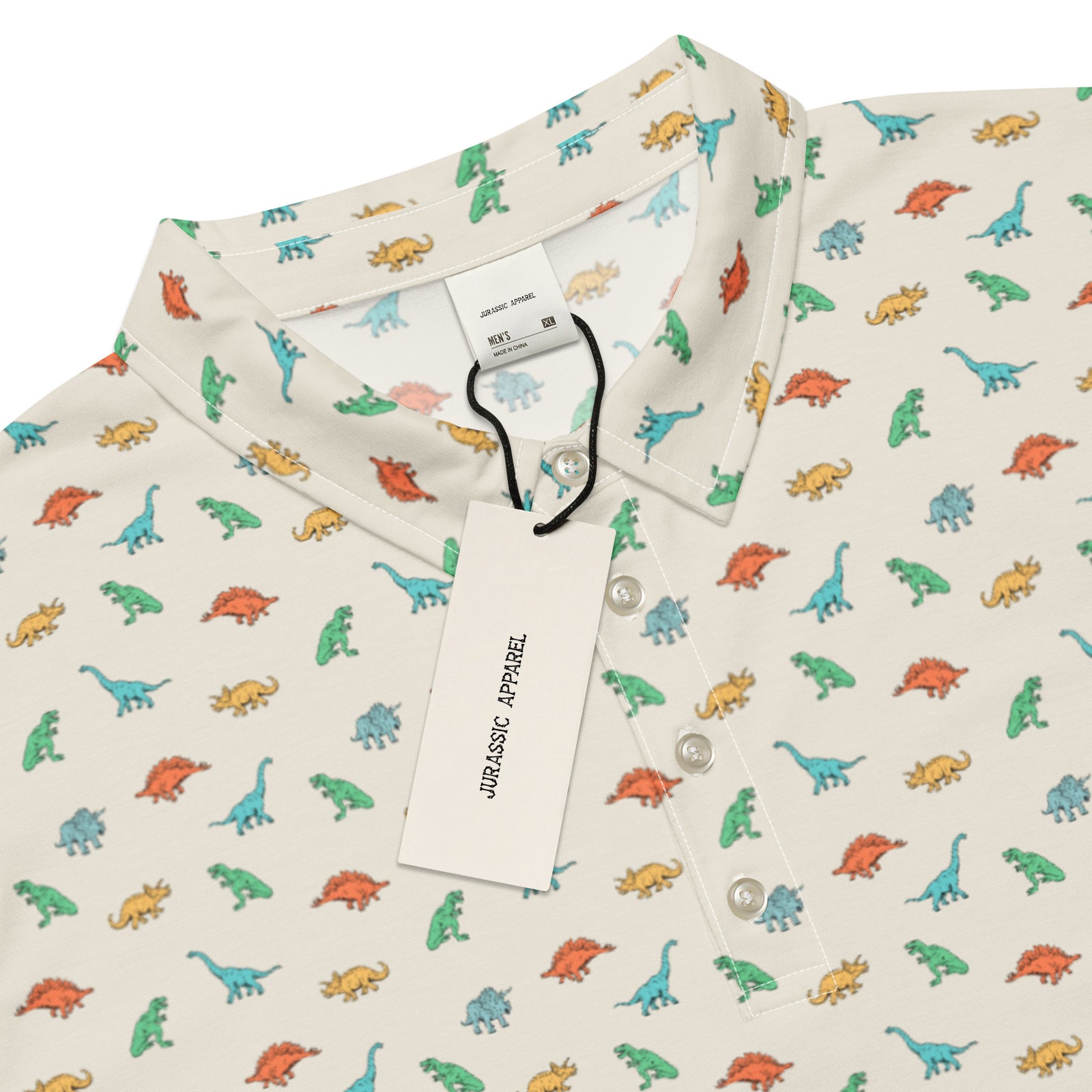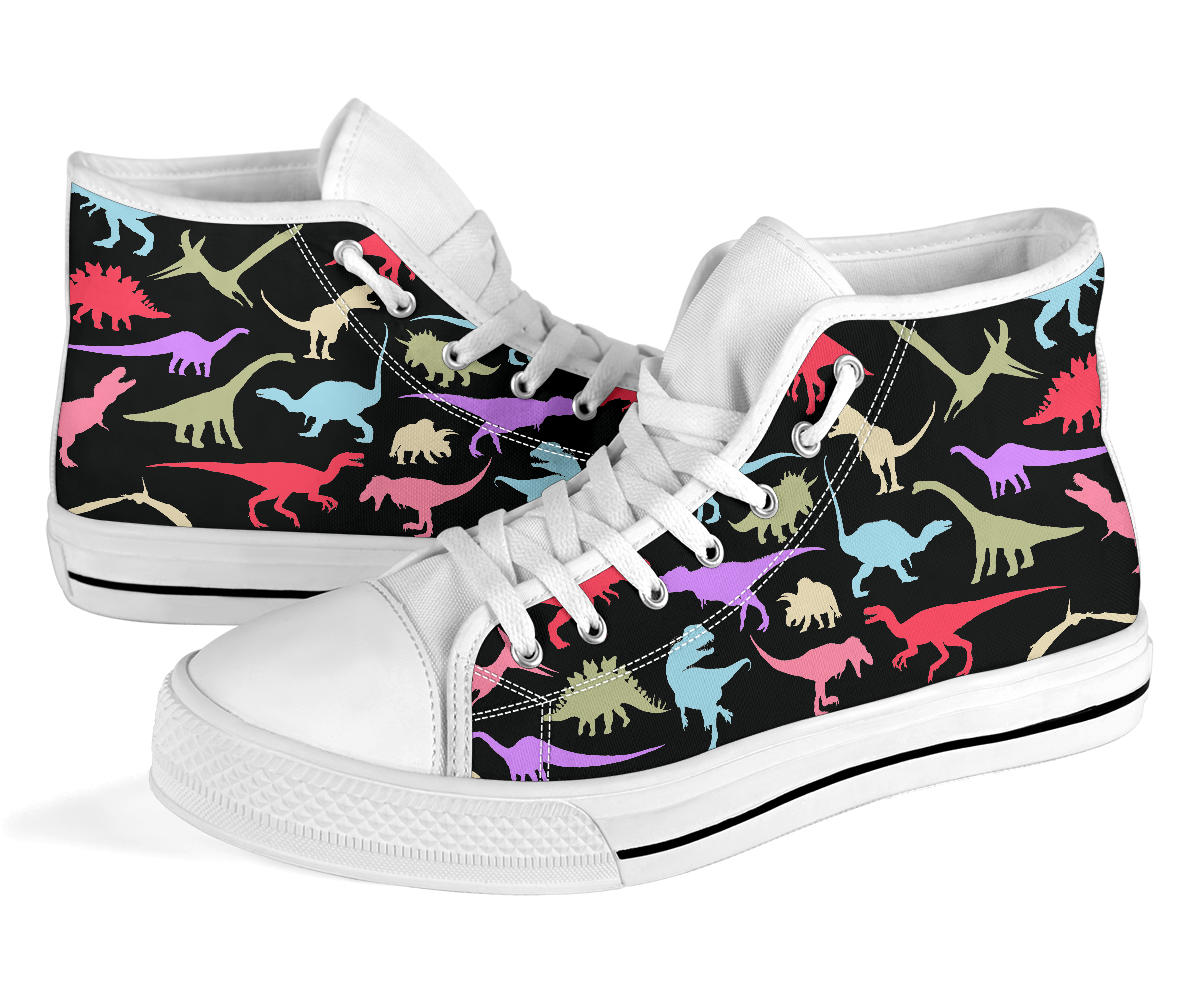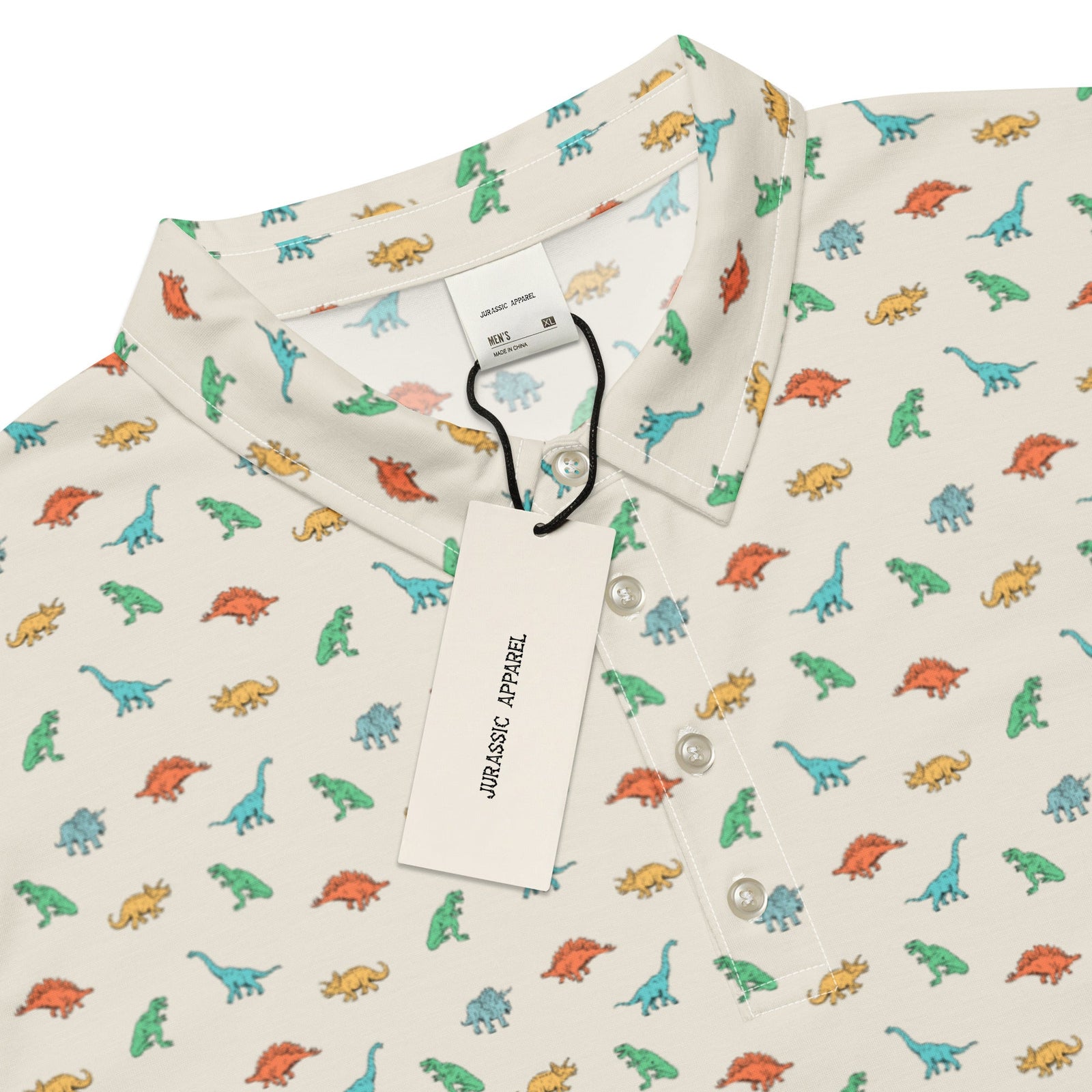Free Shipping On Orders over $75
Free Shipping On Orders over $75
Women's
Men's
Kids
Baby/Toddler
Accessories
Are Alligators Dinosaurs? Exploring the Ancient Links Between Gators and Dinosaurs
February 03, 2025 14 min read

Alligator mississippiensis (Daudin, 1802), American alligator; Loro Parque, Tenerife, Canary Islands, Spain H. Zell
From the mighty Tyrannosaurus rex to the agile Velociraptor, dinosaurs have long captured our imagination. So when we gaze at the lurking, prehistoric-looking figure of an alligator in a swamp, it’s natural to wonder if we’re looking at a modern-day dinosaur. After all, alligators have the armor-like scales, formidable teeth, and a lineage that stretches back to ancient times. Are alligators actually dinosaurs, or just distant cousins?
Short answer: No, alligators are not dinosaurs. They are indeed reptiles with an ancient heritage, but dinosaurs and alligators parted ways on the evolutionary tree a very long time ago. However, the story doesn’t end there. Alligators and dinosaurs share a fascinating evolutionary link that explains why they have some similarities. In this article, we’ll unravel the connection between alligators and dinosaurs, highlight their differences, bust some misconceptions, and explore how these “living fossils” fit into today’s world. Get ready for a casual, fun exploration of science and prehistory!
The Evolutionary Link: How Alligators and Dinosaurs Are Related
Alligators and dinosaurs may seem like very different creatures today, but they are part of the same grand reptilian family tree. Both belong to a group called Archosaurs, a broad category of “ruling reptiles” that includes dinosaurs, crocodilians (alligators and crocodiles), pterosaurs (flying reptiles), and eventually gave rise to birds. This means that, around 240 million years ago during the Triassic period, the ancestors of dinosaurs and the ancestors of alligators were actually one and the same!
To put it simply, imagine the reptile family tree branching out. One branch led to the dinosaurs (and later birds), and another branch led to crocodilians (the group that includes alligators). Scientists estimate that this split happened roughly in the Mid-Triassic era. So while alligators and dinosaurs share a common ancestor, they took separate evolutionary paths. Dinosaurs (apart from their avian descendants) died out about 66 million years ago, while the crocodilian lineage (including ancient alligator relatives) survived.
The result? Modern alligators are often called “living fossils” because they’ve changed so little over tens of millions of years. In fact, in terms of evolutionary relationships, crocodiles and alligators are the closest living relatives of birds — the only living dinosaurs. Yes, you read that right: the pigeons and hawks you see today are technically more dinosaur than any alligator! But alligators are still closely related cousins, which is why they offer scientists clues about dinosaur biology. For example, studies have shown that alligators share certain traits (like the way they hear or how their hearts work) with their dinosaur ancestors, giving us a window into the past.

Internet Archive Book Images, No restrictions, via Wikimedia Commons
Differences Between Alligators and Dinosaurs
If alligators and dinosaurs share common roots, why aren’t alligators considered dinosaurs? The answer lies in their differences. Despite some similarities, there are clear distinctions in biology and classification that set alligators apart from the dinosaurs. Let’s break down some key differences between alligators and dinosaurs:
| Aspect | Alligators | Dinosaurs |
|---|---|---|
| Classification | Reptiles in the order Crocodilia (crocodilians). Alligators are a type of crocodilian, related to crocodiles and caimans. | Reptiles in the clade Dinosauria. This group included a vast range of species (theropods, sauropods, ornithischians) and led to modern birds. |
| Time Period | First crocodile-like ancestors appeared in the Triassic Period (~240 million years ago). Modern-style alligators emerged by the Late Cretaceous (~100–66 million years ago) and survived to present day. | Lived during the Triassic, Jurassic, and Cretaceous periods (about 230 to 66 million years ago). Non-avian dinosaurs went extinct 66 million years ago. |
| Posture & Anatomy | Semi-sprawling posture; legs splayed out to the sides when walking (though they can lift their bodies somewhat). Alligators have a more sprawling gait and a flat, elongated skull with eyes on top for aquatic hunting. | Upright posture; legs positioned underneath the body. Dinosaurs had a variety of body shapes, but many (like T. rex or Triceratops) stood upright. Dinosaur hip and leg structure is distinct, supporting their body above the limbs. |
| Body Temperature | Ectothermic (“cold-blooded”). They rely on external heat sources (sun, warm water) to regulate body temperature. | Likely mesothermic or endothermic (many dinosaurs might have been “warm-blooded” or had more active metabolism, especially the smaller and bird-like ones). This is inferred from bone structure and their bird connections. |
| Habitat & Lifestyle | Semiaquatic predators. Alligators live in freshwater swamps, rivers, and lakes (in the southeastern U.S. and in China for the two living species). They feed on fish, turtles, mammals, etc., and can also swim and bask on land. | Terrestrial (land-dwelling) or aerial (in the case of some feathered species). Dinosaurs occupied diverse habitats – from forests to deserts – but none were fully aquatic. (Note: Marine reptiles like plesiosaurs were not dinosaurs.) |
| Diversity | Very low diversity today: only two alligator species exist (American alligator and Chinese alligator), plus other crocodilian cousins (crocodiles, caimans, gharials). Physically, crocodilians have a broadly similar body plan. | Extremely diverse. Thousands of dinosaur species existed, ranging from chicken-sized raptors to colossal long-necked giants. They filled many ecological roles (predators, herbivores, bipeds, quadrupeds, etc.). |
| Extinction Status | Survivors – Alligators (and crocodilians) survived the mass extinction at the end of the Cretaceous and are still around today. | Extinct (non-avian dinosaurs). All non-bird dinosaurs perished in the end-Cretaceous extinction event. Only the avian dinosaurs (birds) lived on. |
As you can see, while a modern gator might look like what we imagine a dinosaur to be, scientifically they’re a separate bunch. One fun way to think about it: an alligator is more closely related to a sparrow (because of the croc-bird connection through archosaurs) than it is to a Triceratops! That’s how evolution twists its branches. Essentially, alligators are cousins of dinosaurs, not direct descendants. They have their own unique lineage.
Ancient Relatives: The Crocodilian Family
The family tree of alligators is filled with some fearsome ancient relatives. Crocodilians have been around since the time of the dinosaurs, and back then they came in a variety of shapes and sizes beyond the gators and crocs we know today. These ancient relatives weren’t dinosaurs, but they lived alongside them and sometimes even ate them!
One famous ancient crocodilian was Deinosuchus, whose name literally means “terrible crocodile.” Deinosuchus lived in the late Cretaceous period, about 80 to 73 million years ago, in what is now North America. It grew up to 30–40 feet long – much larger than any alligator alive today. This giant predator likely ambushed dinosaurs that came to the water’s edge for a drink. Fossil evidence of bite marks on dinosaur bones suggests Deinosuchus wasn’t shy about snacking on unwary dinos that crossed its path!
Another impressive cousin was Sarcosuchus, often nicknamed “SuperCroc.” Sarcosuchus lived earlier, around 110 million years ago in Africa, and could reach about 30 feet in length. Like Deinosuchus, it likely fed on large prey and shared its world with dinosaurs. These and other ancient crocodyliforms (the broader group including all croc-like reptiles) show that crocodilian relatives were apex predators in the water even when dinosaurs ruled the land.
Interestingly, not all ancient crocodile relatives were huge or ferocious. Some prehistoric croc cousins were built for running on land, and a few were even herbivores (plant eaters)! The crocodilian family was once far more diverse. Over time, however, the only crocodylian forms that survived into the present are the semi-aquatic ambush hunters like alligators and crocodiles. The rest went extinct alongside or even before the dinosaurs. Today’s alligators are basically the last men standing of a once-mighty lineage that stretches back to the Triassic. They carry a bit of that prehistoric legacy in their DNA.
Modern Alligators: Evolutionary Survivors
Alligators and their crocodile cousins are often hailed as “living fossils” – and for good reason. The modern American alligator (Alligator mississippiensis) looks remarkably similar to its ancient ancestors. Fossils from the Late Cretaceous and Paleogene periods (around 80–50 million years ago) show crocodilians that are not much different in skeletal structure from the gators we see today. It’s as if evolution found a design that works and decided, “Why change a good thing?”
Surviving the catastrophic asteroid impact 66 million years ago (the event that wiped out the dinosaurs) was no small feat. How did alligators make it when so many other large reptiles perished? Scientists believe that a few factors helped these reptiles outlast the dinosaurs:
- Amphibious Lifestyle: Alligator ancestors lived in water and wetlands. When the asteroid hit and caused worldwide chaos (dark skies, wildfires, disrupted food chains), aquatic environments were somewhat more stable than land. Living in water may have provided a refuge.
- Cold-Blooded Physiology: As ectotherms, alligators have slow metabolisms and can go a long time without eating. They can hunker down, perhaps in burrows or mud, and survive lean periods. This ability to essentially put their body on “low power mode” would be useful when food was scarce after the extinction event.
- Generalist Diet: Crocodilians are not picky eaters. They’ll scavenge, eat fish, turtles, birds, carrion – whatever they can get. This opportunistic diet means if one food source disappeared, they could switch to another. When ecosystems collapsed, being able to eat just about anything was a lifesaver.
- Slow Evolution, Steady Niche: Research has shown that crocodilians have an exceptionally slow rate of evolution. While that might sound like a disadvantage, it means the crocodilian body plan was already highly effective and didn’t need drastic changes to survive. Essentially, ancient gators were already good at what they do – being ambush predators in the water – and that niche remained available after the dinosaurs were gone.
These factors combined allowed the ancestors of alligators to weather the storm of extinction. While the mighty T. rex and its kin vanished, the humble proto-alligators persisted. Over millions of years since, alligators haven’t had to change much. The two alligator species we have today (American and Chinese alligators) are proof that sometimes, survival of the fittest means sticking with a winning formula.
That said, “living fossil” can be a bit misleading – alligators have changed in small ways and continue to evolve (for instance, modern alligators are generally smaller than monsters like Deinosuchus, and their snouts and armor have adapted to their specific environments). But overall, the resemblance between a modern alligator and an ancient one is striking, underlining just how long this lineage has been around.
Fossil Evidence & Scientific Findings
How do we know all this cool stuff about alligators and dinosaurs? Fossil evidence and modern scientific studies give us insight into their connection. Paleontologists have uncovered a rich fossil record of crocodilian ancestors that lived alongside dinosaurs. For instance, fossil skulls and skeletons of creatures like Deinosuchus, Sarcosuchus, and many other croc relatives help paint a picture of their size, diet, and habitat. We find fossilized osteoderms (bony armor plates) and teeth that tell us these animals had armored skin and conical teeth perfect for gripping prey – just like modern alligators.
Moreover, some dinosaur fossils bear the bite marks that match crocodilian teeth, evidence of ancient run-ins between these groups. This kind of fossil detective work confirms that large crocs preyed on dinosaurs. We even have fossils of early crocodilians from the Triassic period that show what the common ancestors of crocs and dinosaurs might have looked like (kind of a mix of features).
Apart from fossils, scientists study living alligators to infer dinosaur biology. Because birds and alligators are the closest living relatives of extinct dinosaurs, any common trait between birds and gators likely existed in dinosaurs too. One fascinating study found that alligators can listen for sounds in a way similar to birds – by sensing slight time differences in each ear – implying their shared ancestor (and thus dinosaurs) had the same ability. In another study, geneticists sequenced crocodilian DNA and even reconstructed much of the genome of the common ancestor of crocodiles, birds, and dinosaurs. They discovered that crocodilians (alligators, crocodiles, etc.) have changed incredibly slowly at the genetic level, compared to the rapid evolution in birds. This helps explain why alligators still resemble their ancient forebears, and it gives researchers a genetic time machine to better understand dinosaur evolution.
Every new fossil discovery or laboratory finding adds a piece to the puzzle. As science advances, we learn more details about how alligators and dinosaurs connect. But even now, the evidence we have paints a clear picture: alligators aren’t dinosaurs, but they’ve been side-by-side with dinosaurs through time and share deep evolutionary roots.
Misconceptions: Why Some Think Alligators Are Dinosaurs
It’s easy to see why people might casually call alligators or crocodiles “dinosaurs.” They look prehistoric – essentially unchanged in appearance from the age of dinosaurs, and they can live for decades, giving off a timeless vibe. Pop culture also sometimes blurs the lines; you might hear phrases like “living dinosaur” referring to a gator. Let’s clear up a few misconceptions:
- “Alligators haven’t changed since the dinosaurs” – This is a partial truth. Alligators’ overall form is indeed ancient, and they give a glimpse of what a large reptile from the Mesozoic might look like. But they have undergone evolution (just very slowly). Calling them unchanged oversimplifies the subtle adaptations they’ve made over millennia. They’re similar to their ancestors, but not carbon copies.
- “If birds are dinosaurs, why not alligators?” – Birds evolved directly from theropod dinosaurs (two-legged meat-eaters) and thus are considered the only surviving dinosaurs. Alligators evolved from a different branch of the reptile family tree. They share a common ancestor with dinosaurs, but they are not descended from dinosaurs. They split off before dinosaurs like T. rex ever existed. Think of it this way: all dinosaurs (including birds) share a closer kinship with each other than any of them do with alligators.
- “Crocodiles and alligators are living dinosaurs” – It’s more accurate to say they are “living relatives of dinosaurs.” This phrase often comes up because of their ancient look and lineage. However, the true living dinosaurs are birds. Next time someone at the zoo calls a gator a dinosaur, you can smile and gently inform them that it’s actually a distant cousin. The real modern dinos are flying above (the birds) – a fact that surprises many!
In summary, the idea that alligators are dinosaurs is a misconception rooted in their appearance and ancient origins. The reality is a bit more nuanced but no less fascinating. Alligators aren’t dinosaurs, but they tell a story that involves dinosaurs at nearly every turn.
The Role of Alligators in Today’s Ecosystem
Alligators might not be dinosaurs, but they are absolutely crucial members of their ecosystems today. In places like the Florida Everglades and other wetlands of the southeastern United States, the American alligator is considered a keystone species. A keystone species is one that has an outsized impact on its environment relative to its abundance. Remove it, and the ecosystem changes dramatically.
One of the alligator’s most important ecological roles is as an ecosystem engineer. During dry seasons, alligators dig out “alligator holes” – basically mud depressions that reach groundwater, creating puddles or ponds. These water holes become vital refuges for fish, insects, crustaceans, and other wildlife when the rest of the swamp dries up. By making these pits, alligators inadvertently provide habitat for countless other creatures (talk about doing community service!). When the rains return, those holes help retain water and nourish plants.
Alligators are also top predators in their domain. They help control populations of prey species like fish, turtles, and nutria (a type of invasive rodent), which keeps the food web in balance. By preying on sick or diseased animals, they may also help keep populations healthy. In the Everglades, for example, if alligators were removed, there could be an overabundance of certain fish or snails that would then overgraze vegetation or otherwise upset the ecological balance.
Beyond the swamps of the U.S., crocodilians worldwide (alligators, crocodiles, caimans, gharials) fill similar roles in their respective ecosystems. They are often apex predators and have no natural predators of their own (besides humans). This apex status helps maintain a check on the food chain below them. Unfortunately, human activity has threatened many crocodilian species. The Chinese alligator is critically endangered due to habitat loss and was once nearly extinct in the wild. Conservation efforts are underway to protect these ancient reptiles because losing them would mean more than just the disappearance of a cool animal – it would ripple through their habitat’s entire structure.
In short, alligators today are guardians of the wetlands. They might come from a lineage that watched dinosaurs come and go, but in the present, they have carved out an irreplaceable spot in nature. Our world would be a very different (and likely poorer) place without these scaly swamp dwellers.
Fun Facts About Alligators and Their Ancient Cousins
Let’s lighten things up with some fun and quirky facts about alligators, crocodiles, and their prehistoric relatives. These tidbits show just how amazing these creatures are – and how truth can be stranger than fiction!
- Bite Force Champ: Alligators have one of the strongest bites in the animal kingdom. An American alligator can slam its jaws with a force of over 2,000 PSI (pounds per square inch)! For comparison, that’s like the weight of a small pickup truck concentrated on each square inch of whatever’s caught in those teeth. You definitely wouldn’t want to be on the receiving end of that chomp.
- Toothy Regeneration: An alligator goes through a lot of teeth in its lifetime. They have about 80 teeth in their mouth at any given time, and as teeth wear down or break off, new ones grow in. An alligator can cycle through approximately 2,000 to 3,000 teeth over the course of its life! It’s like a conveyor belt of teeth – always ready for the next bite.
- Ancient Longevity: Crocodilian ancestors have been around for a mind-boggling length of time. If you could hop in a time machine and go back 80 million years, you’d see creatures recognizable as alligators/crocodiles living alongside dinosaurs. In contrast, if you go back just 10 million years, you wouldn’t find a single human – our ancestors were still very apelike or not yet evolved. Alligators are truly time-tested survivors.
- Dino Devourers: Those giant ancient crocodilians like Deinosuchus weren’t just living with dinosaurs; they were eating them. Imagine a massive croc lying in wait as a duck-billed dinosaur comes to drink, only to burst forth and drag it underwater. It’s like a Jurassic Park scene that actually happened, as evidenced by dinosaur fossils with croc bite marks.
- The Real Living Dinosaurs: Here’s an ironic twist – the closest living relatives to the ferocious Velociraptor or T. rex aren’t alligators at all, but birds. Next time you see a pigeon, remember that birds are often considered “living dinosaurs” because they descended directly from the dinosaur lineage. That sparrow on your bird feeder has a lot more dino DNA than any gator does!
- Name Game: The name “alligator” comes from the Spanish word el lagarto, which means “the lizard.” Spanish explorers in Florida used that term when they encountered these big “lizards,” and it stuck. Of course, alligators are not lizards, but you can see why early observers might have thought of giant lizards when they saw them.
- Temperature-Dependent Babies: Alligators have a wild way of determining the sex of their offspring. It doesn’t involve genetics (like X or Y chromosomes) the way it does in humans. Instead, it depends on the temperature at which the eggs incubate. Warmer nest temps tend to produce males, while cooler temps produce females. A difference of just a few degrees can decide whether an egg hatches a boy or a girl gator!
- Florida’s “Dino” Neighbors: The U.S. is home to both alligators and crocodiles, but only in one place do they naturally live together: the southern tip of Florida. It’s the only spot in the world where you might see an American alligator and an American crocodile in the same wetlands. While crocs and gators are different species, seeing them side by side is about as close as you can get to a Jurassic reunion tour nowadays.
Conclusion: Summing Up Key Takeaways
So, are alligators dinosaurs? By now, you know the answer: no – but they’re part of the dinosaur story in their own special way. Alligators are like time travelers among us, carrying a legacy from the Triassic period to the present. They share a common ancestor with dinosaurs, giving them an ancient pedigree, yet they are distinct in classification and form.
Dinosaurs (aside from birds) are long gone, but alligators survived mass extinction and continue to thrive in modern ecosystems, playing crucial roles as apex predators and ecosystem engineers. They may not breathe fire or grow to the size of a T. rex, but alligators command respect just the same – they’re evolutionary success stories.
In our exploration, we saw that the link between gators and dinos is all about evolution: common roots, diverging branches, and a whole lot of history. We busted myths, drew comparisons, and even indulged in some fun trivia along the way. The next time you see an alligator basking on a riverbank, you’ll appreciate that you’re looking at a creature with a lineage older than dirt (almost literally!). And while it’s not a dinosaur, it’s certainly a window into a prehistoric world.
In the end, alligators and dinosaurs each have their place in the grand tale of life on Earth. Understanding their connection enriches our sense of wonder – because it shows that even after millions upon millions of years, life finds a way to carry on, sometimes hardly changing at all.














